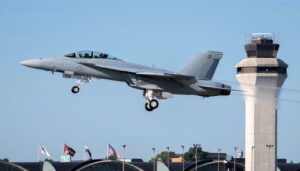
The Senate this week as part of its debate on the next authorization bill for the Defense Department is considering whether to direct the Pentagon to establish “at least one” strategic port for Arctic operations to help the U.S. more proactively protect its interests in the region, Sen. Dan Sullivan (R-Alaska) said on Wednesday. Sullivan said that Congress previously in the fiscal year 2017 National Defense Authorization Act (NDAA) mistakenly “gave the Pentagon discretion to look at a strategic Arctic…

 By
By 











